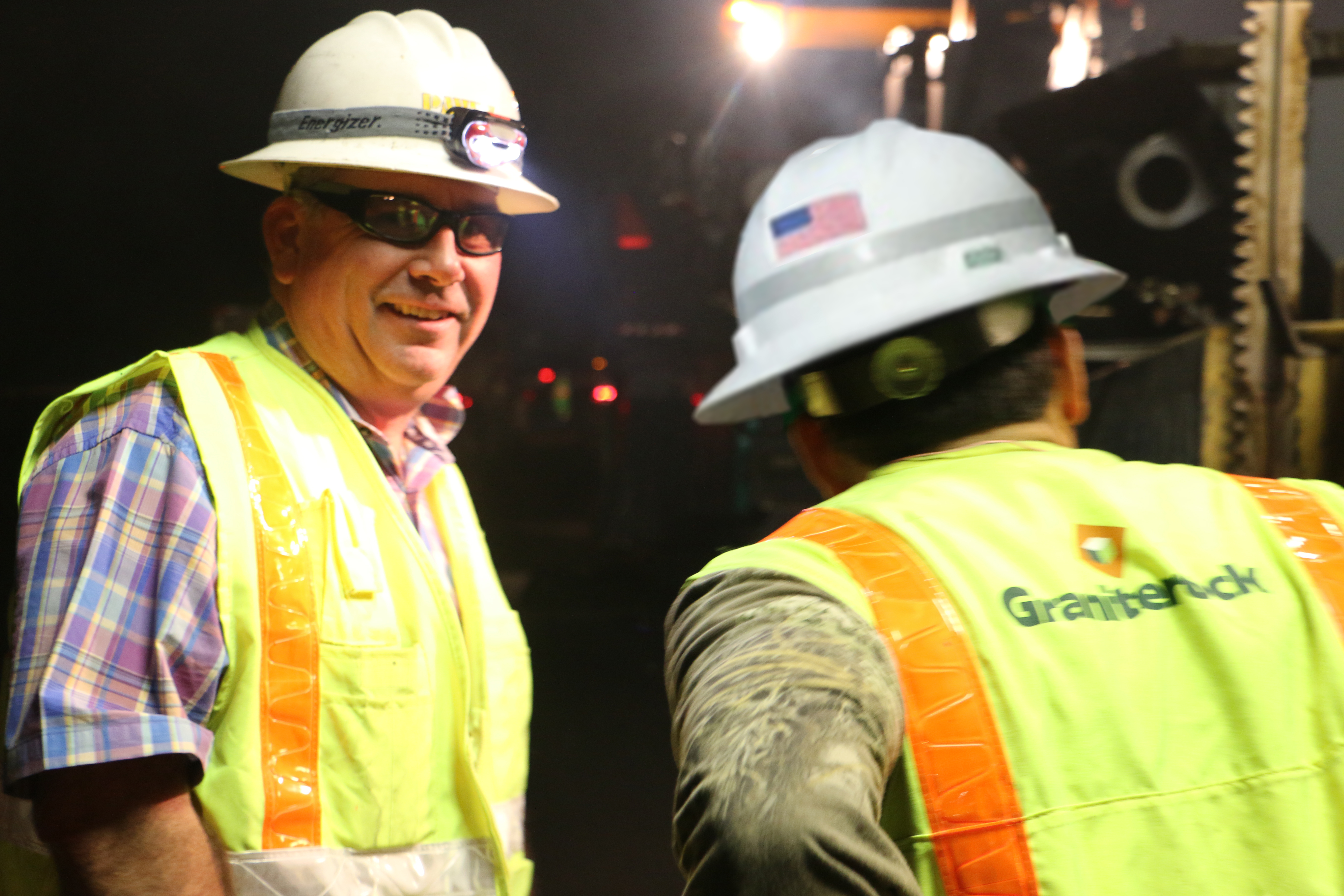
Keys to the perfect paving job
Posted by Graniterock on Dec 6, 2016
Brent Edelman is an expert on what it takes to execute the perfect asphalt paving job.
A Graniterock superintendent and operations manager, Brent has spent his 30-year construction career building roads, highways and other high profile projects.
Currently he works with Graniterock’s paving crews and project management teams to ensure each project turns out according to the owner’s specifications, and is delivered on time and budget.
We’ve asked Brent to share some of that knowledge and experience.
Q. What is the biggest mistake you see when crews put down asphalt?
Before you start any kind of paving project, whether it’s a major highway or parking lot, the project management team needs to sit down and map out a detailed paving plan. That begins with a checklist. The paving plan should be designed to meet production, compaction, smoothness and safety goals. The checklist is defined by:
+ Safety needs
+ Trucking
+ Crews
+ Equipment
+ Start times
+ Quantity goals
+ Traffic control
+ Road oils
+ Technical services required
You have to ensure your hot plants and your trucking are all balanced for the job so the material is delivered in a timely manner. You don’t want to be sitting around waiting for your trucks and you don’t want trucks sitting on the job. Material delivery should be balanced so the paving train can move forward at a consistent speed to maximize compaction and production.
The biggest pitfalls I see are when projects don’t have a solid plan and therefore end up with the wrong equipment or material for the specific job, and they don’t have the right manpower.
For example, a big highway paving job requires large, heavy equipment compared with a small custom parking lot. Each job needs different pavers and rollers.
Another mistake I see is guys not properly raking the joints.
You want to be raking properly so you can get the roller on the mat before it starts to cool. The less handwork, the better. Too much takes away from the mat quality and you lose heat instead of getting compaction.
Q. What trends do you see with asphalt paving for 2017?
The biggest trend right now is rubberized asphalt on big highway jobs. Rubberized asphalt seems to be the mix of choice for Caltrans, partly because it’s a recycled product and it produces a higher quality mix. Another benefit is rubberized asphalt results in a quieter road.
It can be more difficult to work with – rubberized asphalt is a less forgiving material, so it’s very hard to do handwork with it.
Q. In your 30 years in construction, what is the most memorable paving job you’ve been part of?
I’d have to say paving Mazda Raceway Laguna Seca in Monterey in the early 2000s to get it ready for the MotoGP. I’ve paved that raceway four times in my career, but this particular job took a ton of coordination.
We removed thousands of yards of dirt and had two pavers and crews working side-by-side.
That’s a unique road course with the famous corkscrew and the hills and turns, and there can’t be any joints in the paving.
There was a group of German inspectors who were measuring and checking our work the whole time to verify the track was safe and good for the motorcycles for this event.
At the end of the day, they said it was some of the best paving they’d seen in years.
Back to all Blogs
